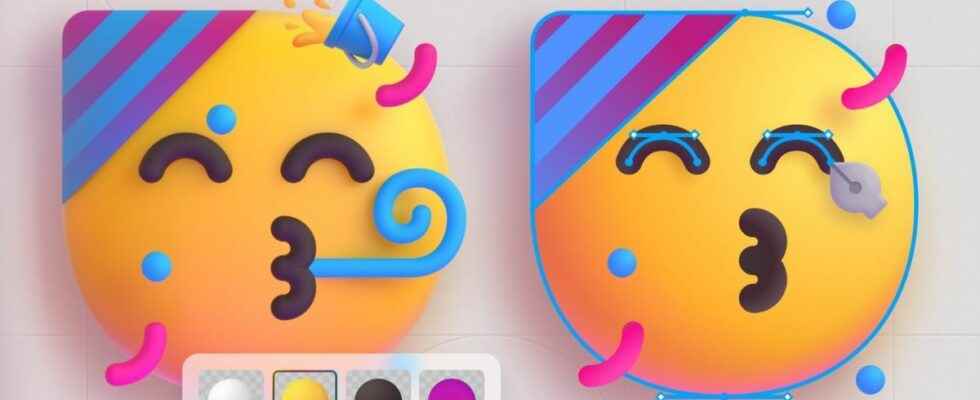Thousands of Microsoft emojis have just arrived on Github. The Windows publisher has just published, under free license, more than 1000 of its designs so that everyone can modify and use these small images.
Microsoft has indeed changed its tone on free software and open source. If in 2001, the company was controversial by qualifying Linux as an IT “cancer”, since then the company has changed its tune, as evidenced by the acquisition of the GitHub platform in 2018. More recently, the Microsoft publisher has just published all of its emojis on GitHub, allowing anyone to use, modify and implement them in various tools.
Clippy, deprived of open source
The news may seem unimportant at first glance, but it is actually a very interesting tactical move that could have serious repercussions. The “Fluent” emojis, as they are nicknamed by Microsoft, were presented at the same time as Windows 11. The usual yellow men who cry with laughter or stick out their tongues had received a welcome facelift for the occasion, making them 3D. Until then, this version of the Unicode standard was only available on the OS and the company’s products, but now everyone can have access to it legally, freely and free of charge.
In all, more than 1,000 emojis have been published on Github, each time with the 3D version of the design, the 2D variation and the monochromatic version in accentuated contrast. JPG, PNG and SVG versions are available for each. Only a few exceptions remained locked behind Microsoft’s proprietary license, including the Clippy emoji, which is copyrighted. Images containing the Windows logo are also absent, since they refer to a registered trademark. All other emojis have been contributed to the great pool of free web resources. And it could well change the way these little guys appear on your sites and in your favorite apps.
Free to modify, adopt and adapt the images
Indeed, the design and the list of emojis available on your smartphones and PCs are managed by the Unicode Consortium. In addition to standardizing the use and display of text across platforms, this organization determines which emojis will be integrated into our systems and what they should look like. But each gadget maker or software company is given some freedom to adapt each emoji. This explains why an emoji sent from an iPhone will not necessarily look like the same emoji sent from an Android phone. Or why sites like Twitter are replacing system emojis with their own versions.
The availability of Microsoft’s huge catalog of emojis could well be a game-changer. Rather than relying on the version dictated by the Unicode consortium (which is sometimes a little basic in its design), each application developer or website publisher will be able to draw freely on Microsoft’s resources to build their catalog of emojis . And if by chance everyone started using the Microsoft version, communication via emoji would become much more homogeneous across different OSes and websites.
